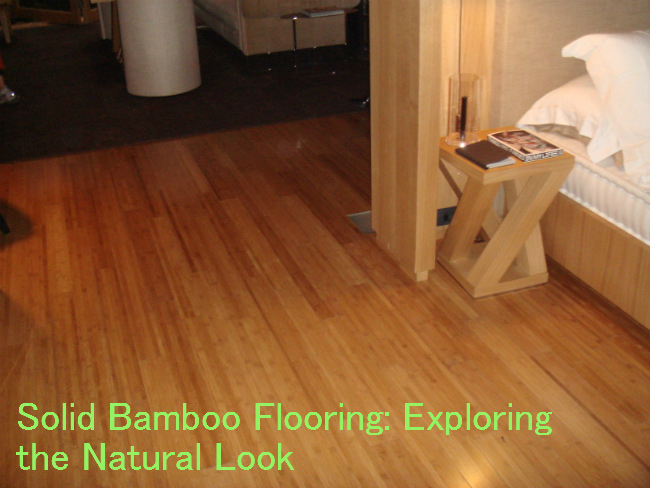Solid Bamboo Flooring: Exploring the Natural Look
The flooring world has undergone a drastic makeover in the last few years, thanks to the revolution brought about by bamboo. For a more natural and ‘greener’ option, bamboo flooring without question is what must be chosen. Apart from lending a graceful and aesthetic appeal to home décor, bamboo is also a much cheaper alternative compared to wood.
There are times where one often gets confused since bamboo feels a lot like wood. But in reality it’s just grass. Despite the softness of the plant, bamboo is dense and extremely hard like maple or oak. For those who thought how bamboo can prove to an effective flooring option, it should make sense now. The reason why most people are particularly fond of the ‘Moso Bamboo’ species is understandable. It is one of the fastest growing plants and is a good harvest, which is done right after a span not exceeding 4-5 years. Another plus point about this plant it that it regenerates right after it is cut, so the harvest can be of the same plant after the 4-5 years span.
What is solid bamboo flooring?
For convenience, flooring options from bamboo have been divided into two categories, on the basis of construction:
One is the engineered and the second is solid bamboo flooring. The latter is quite similar to hardwood flooring. Here, it’s fastened using the nails or staples, with or without the mastic. Despite being a tad time-consuming, it takes twice the time of the floating-floor installation, but the result is a permanent and rock-solid floor. When choosing the solid planks, you have the option of selecting from a host of prefinished ones, such that it matches to the furniture as the last plank gets installed.
The best thing about this type of flooring is that it wears a completely natural look. The surface material has very rich features, with appealing patterns too. Even if scratches or dents appear on the floor, it can be sanded down and refinished on a periodical basis, to bring the same newness back. However, it suffers from few shortcomings like lesser durability and resilience compared to engineered or strand woven varieties.
What are the forms?
Ideally, there are three different kinds of solid bamboo flooring- vertical grain, flat grain and strand bamboo. The vertical grain solid bamboo is made out of thin bamboo strips stacked on the edges and attached using glue. The flat grain type is the commonest of the lot, where thin and felt strips of bamboo get stacked on top of the other and finally, laminated. Lastly, the strand bamboo gets manufactured from the super-thin, shredded fibers and mixed with resin, pressed into the very hard planks and made ready for use.
Regardless of the consumer’s choice, solid Bamboo flooring comes in thin pieces. Checking for the length, grain pattern and the natural shade of bamboo is also of prime importance. The good thing is that these kinds of flooring options are available in aplenty (almost 50 pre-stained colors), which range from anything in cedar hues to bright shades like reds, greens and so on.
How to manufacture solid bamboo planks?
Bamboo can be extremely hard in its natural form, but the brittleness persists when raw, so better avoided in modern flooring applications.
To manufacture solid bamboo planks, it is wise to slice the stalks of grass into thin pieces. The skin gets removed from the materials and boiled in boric acid, which helps kill microorganisms or any bacteria that may spoil the bamboo, besides removing the starches.
Then the slices are coated in special adhesives, bonded into the solid pieces via the application of heat and pressure. Now, a lot depends on how the chips are lined up that will eventually determine the kind of solid bamboo flooring.
For example, in the horizontal form, the chips are laid flat and on top of the other, which wears a more consistent look.
For the vertical form, the slats are lined up, straight up and down and glued together using pressure from either side. This too looks very natural, but the overall appearance is mottled. This is effective for making the room a little more appealing.
At the end, when the adhesive has dried the solid planks, apply the UV lacquer to finish off with the curing process.



 皖公网安备 34180202000049号
皖公网安备 34180202000049号